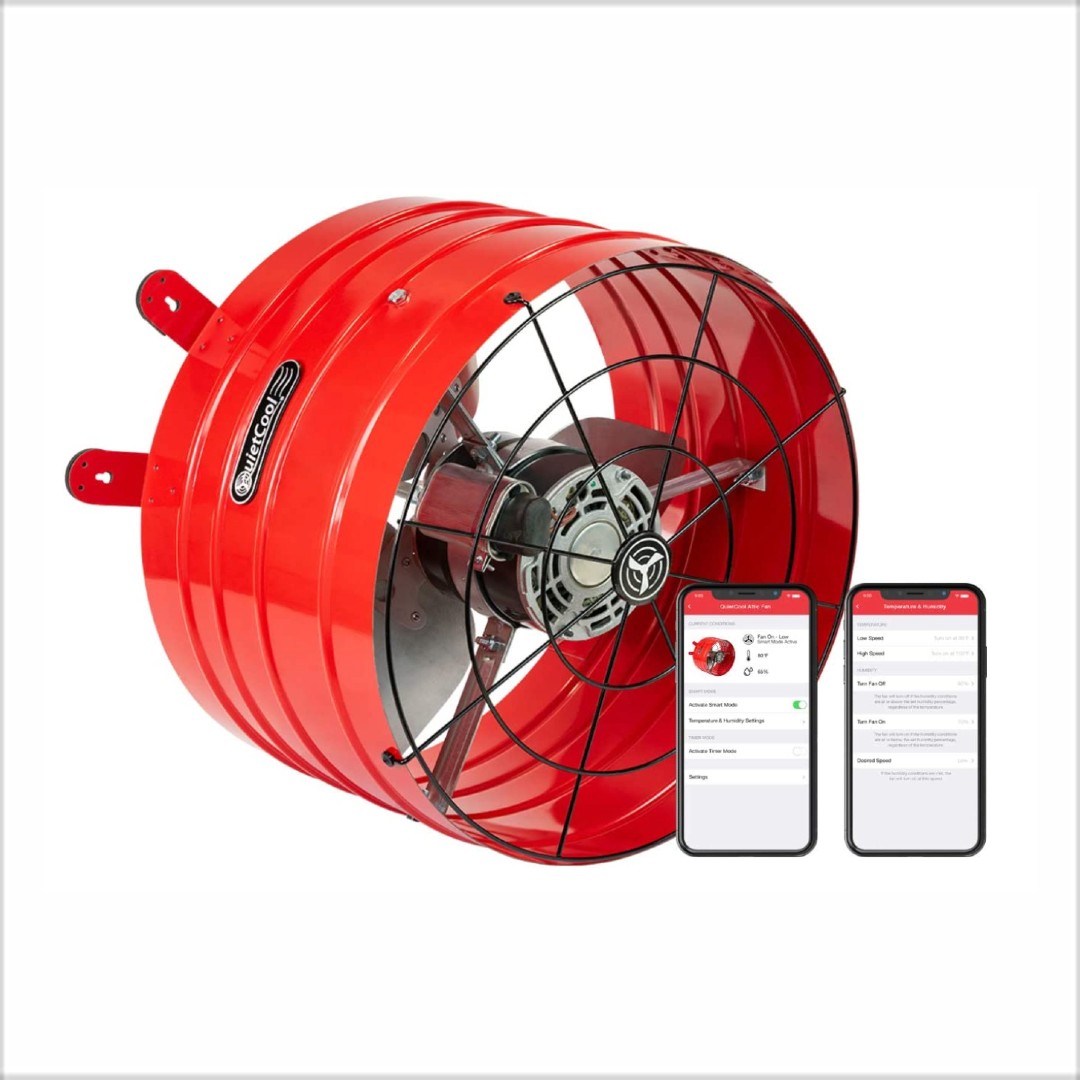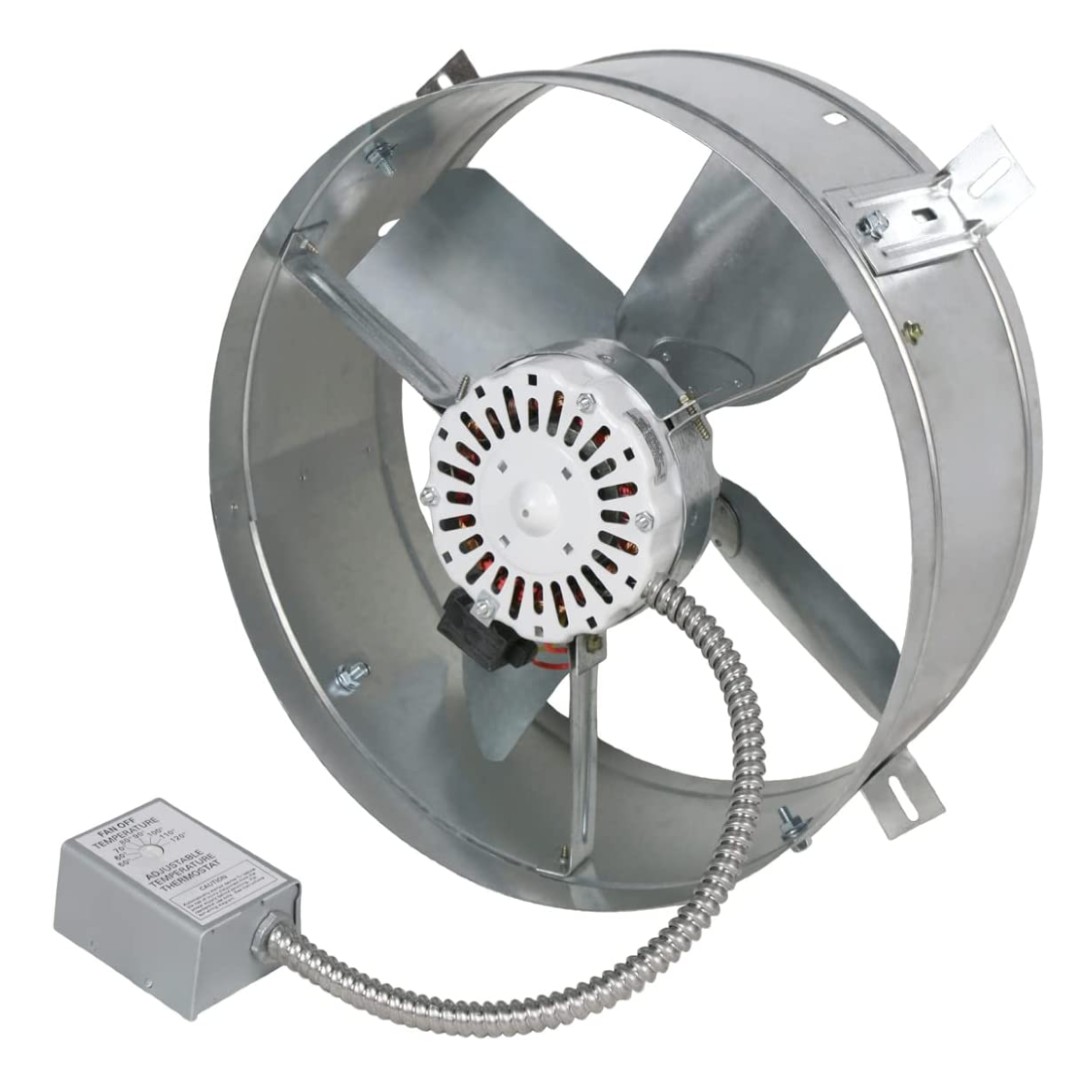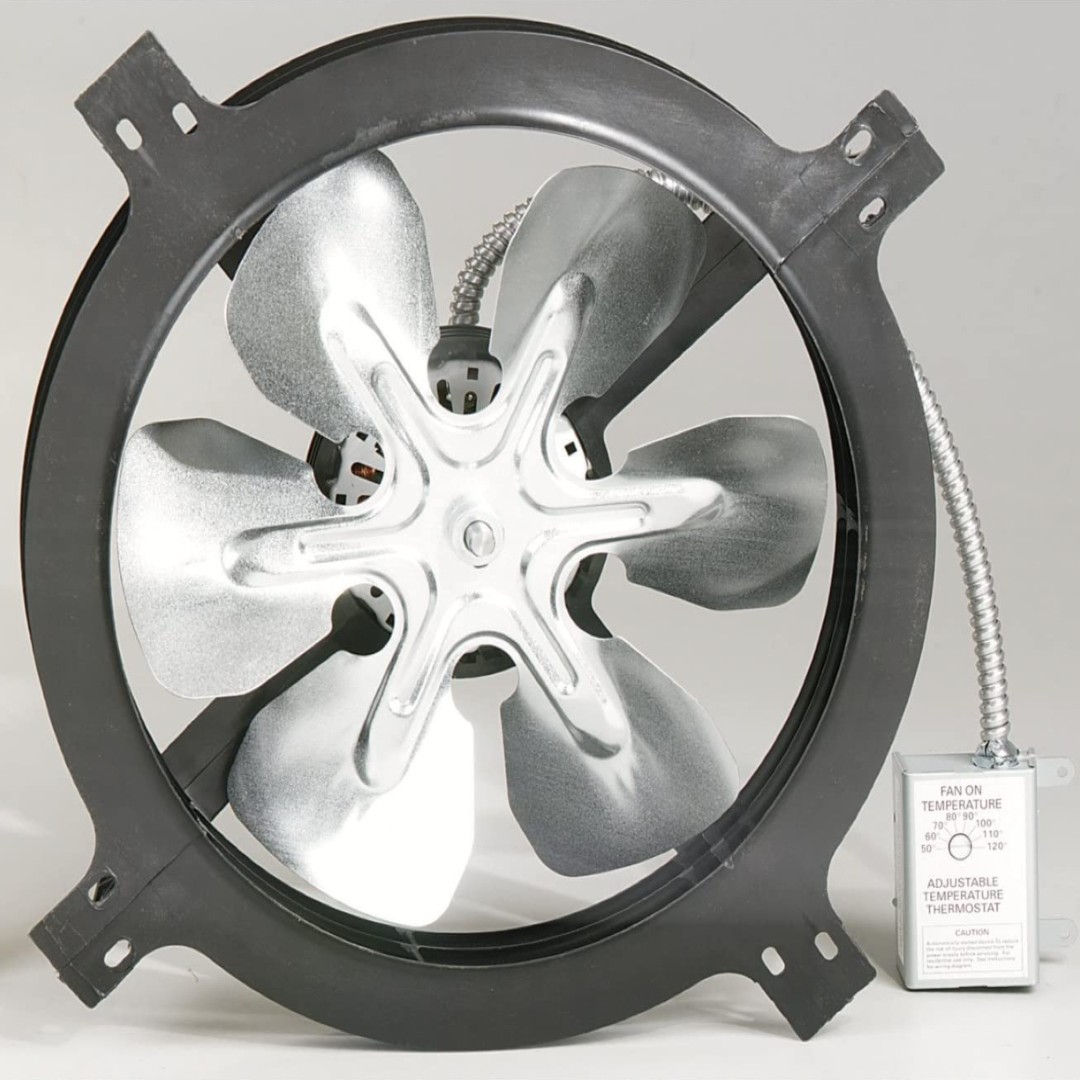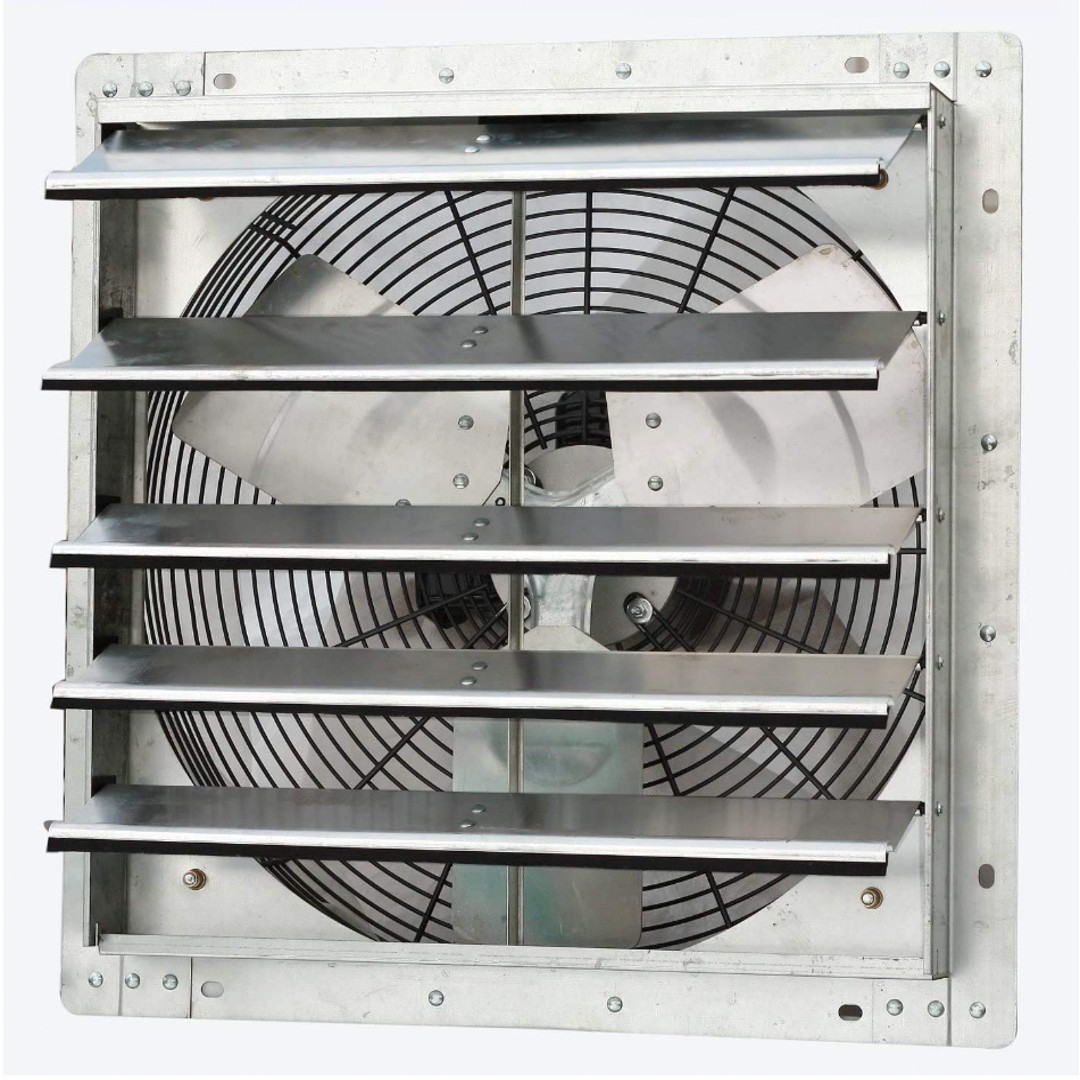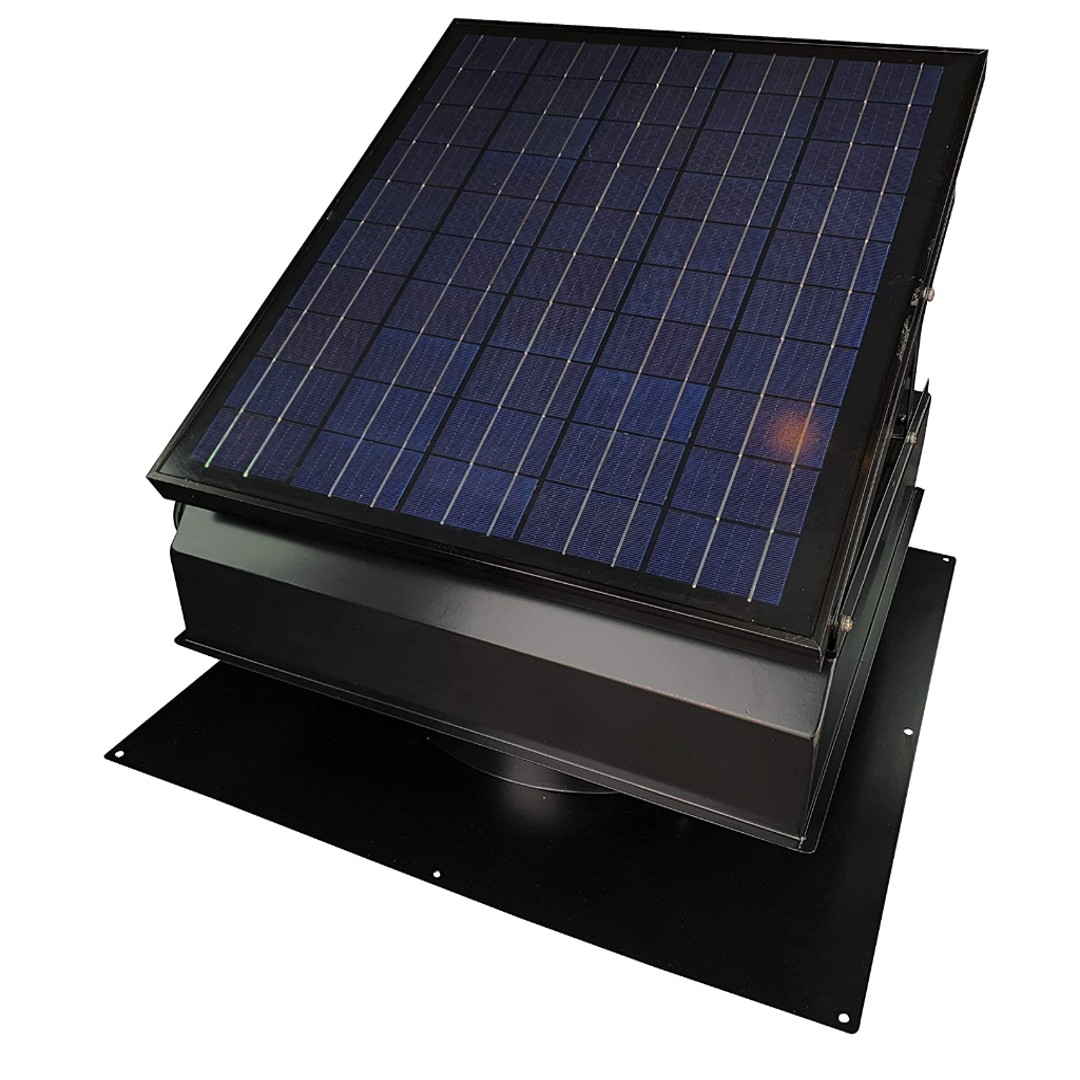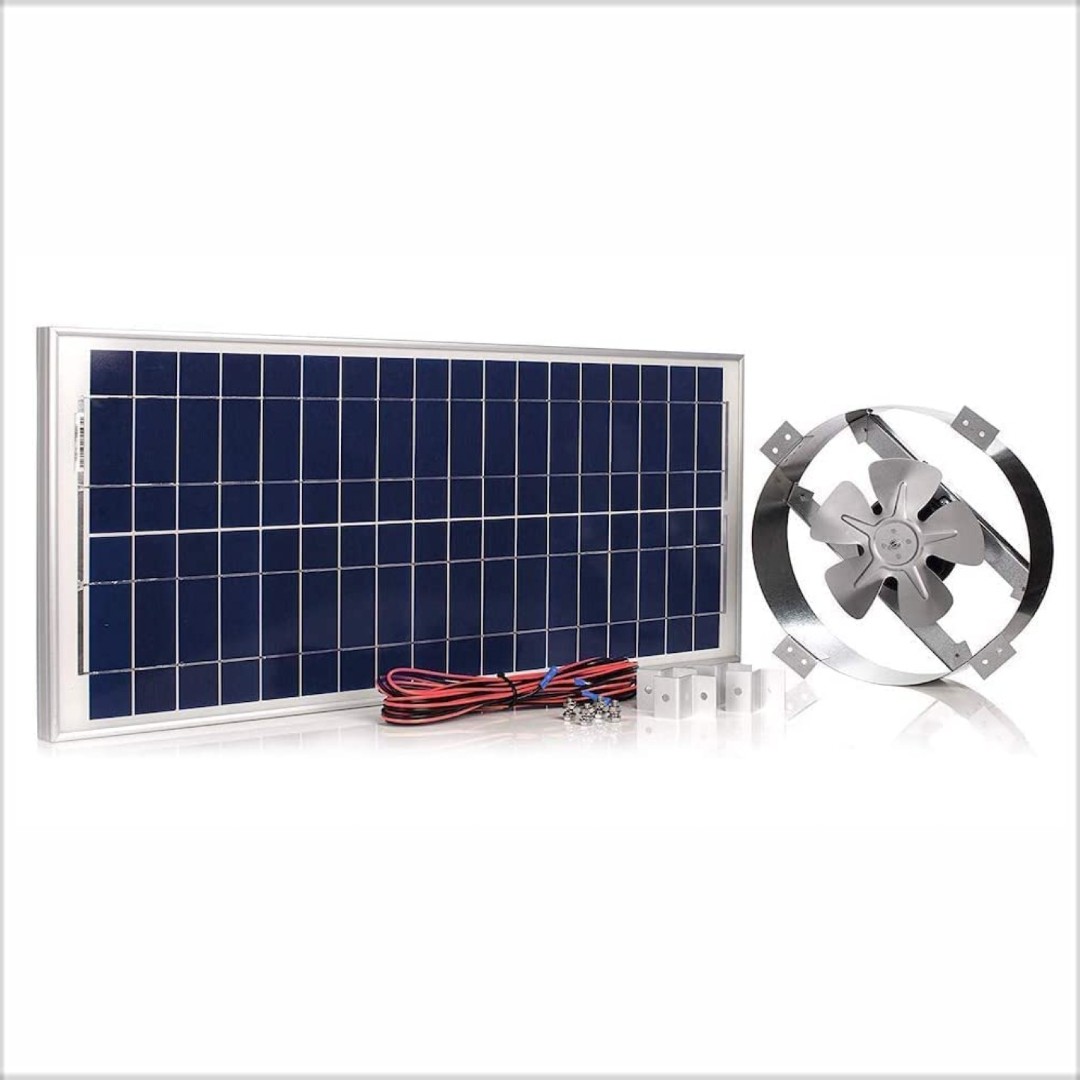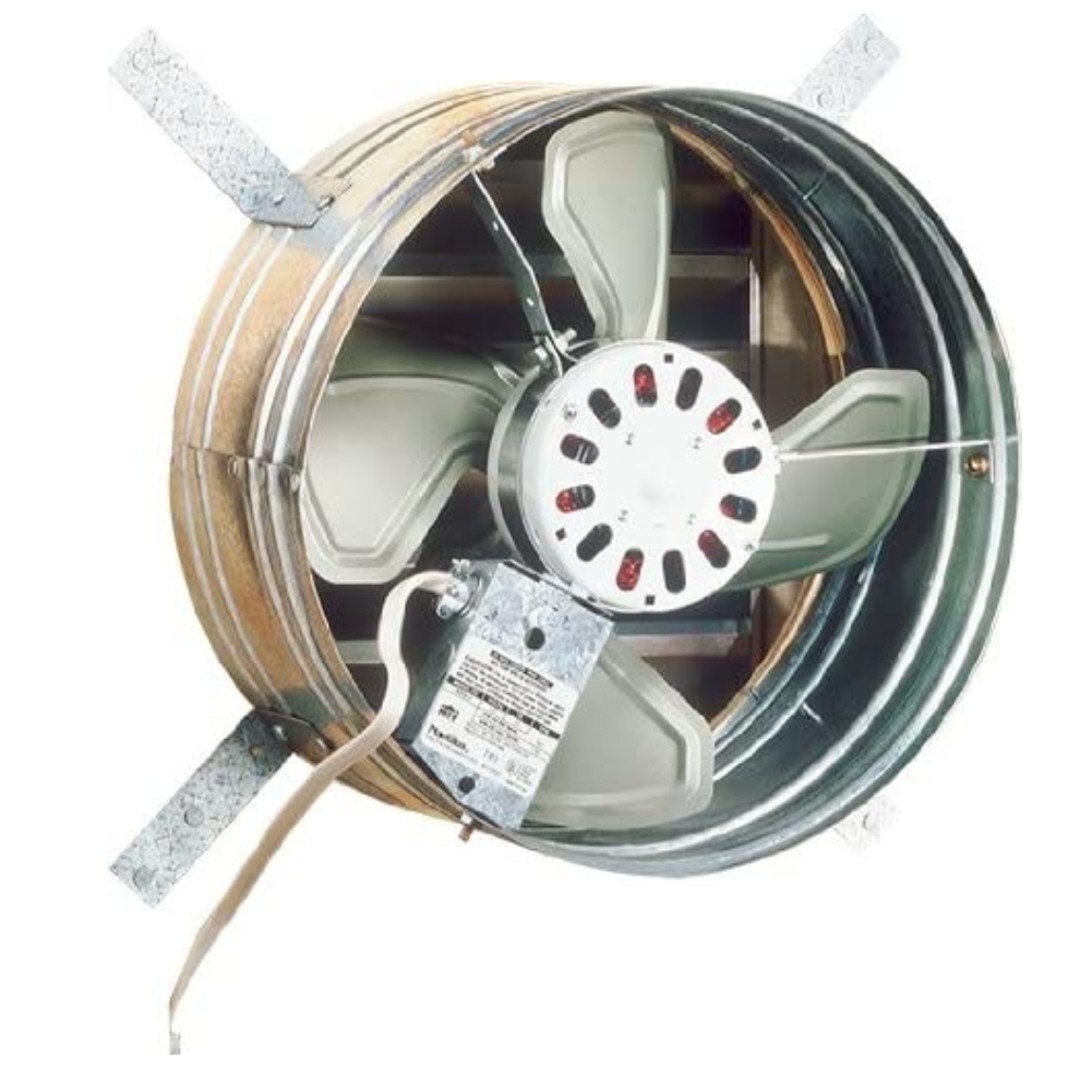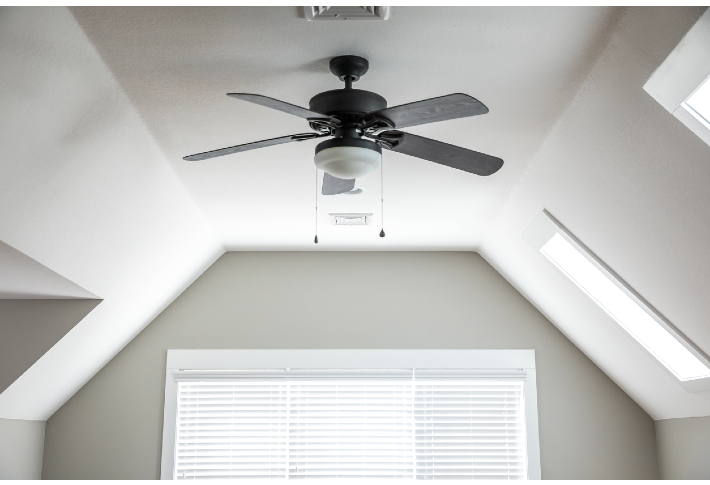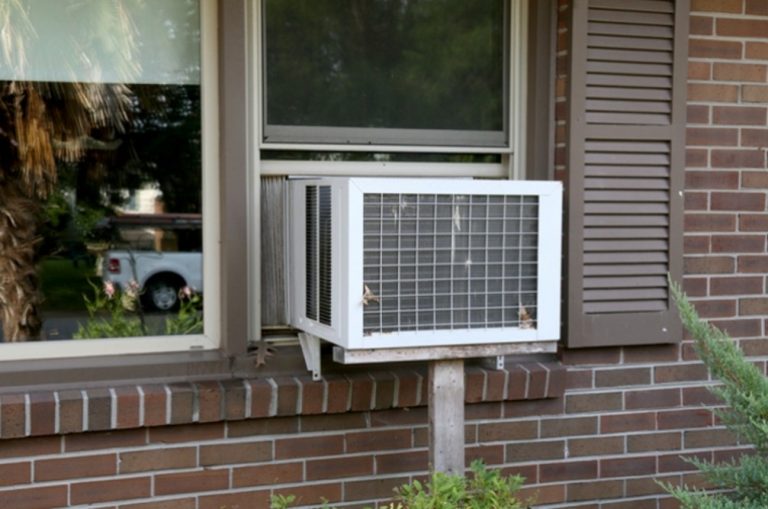Ensure Proper Ventilation in Your Space With the Best Attic Fan
For many of us, our attics are a convenient option for storage of all sorts of stuff. Their out-of-the-way location makes for a perfect place to keep extra items. Without proper temperature control, especially in hot summer months, the temperature in your attic can rise to as much as 150°. This temperature rise is more pronounced in the attic because of the tendency of hot air to rise due to its weighing less than cold air. The greater humidity also causes a considerable build-up of moisture. This is where attic fans come in. The high temperature and moisture build-up can result in the destruction of stored items, compromise the integrity of your roof and your home’s overall structure even. It is for this reason that an attic fan is such a critical aspect of home improvement.
Because of the important function they serve, getting a good quality attic fan for a reasonable price is important. We have put together a list of the top attic fans in 2023, along with the features that make them stand out, for your reading pleasure. Bring cool and fresh air into your space with one of these picks.
Our Top Picks for Attic Fans
QuietCool Smart Attic Fan
– Best OverallThis powerful, gable mount, energy-saving attic fan can run at variable speeds to cater to your needs. With its Smart Control app that includes presets for various seasons and climate zones, control is always at your fingertips. The QuietCool Smart Attic Gable Fan runs on as low as 157 watts, with a maximum power of 205 watts, and produces an airflow of 2,860 CFM. It features built-in mounting tabs, rendering the installation process hassle-free. It is made of steel, weighs 24.3 lbs, and has dimensions of 16 x 16 x 10 inches. Compared to other attic fans, this one’s sturdy design and smart features earn the top spot on our list as best overall.
- It is energy efficient.
- Works with a Smart Control app that gives you greater control over your unit.
- It runs at variable speeds for various conditions.
- It can be very loud when it’s not mounted solidly enough, but this is easily sorted by stabilizing it.
Cool Attic CX1500 Attic Ventilator
– Best Noise ControlThis attic fan is very easy to install. Its carefully engineered mounting system makes it very stable ensuring quiet operation. It comes with a 10 amp adjustable thermostat, a 3.4 amp, 115 volt, 60 Hz thermally protected motor, and 4 precision balanced fan blades for minimum vibration and better air movement. The Cool Attic CX1500 Gable Mount Power Attic Ventilator is made of galvanized steel and has dimensions of 6.5 x 16.2 x 15.2 inches, and is energy efficient. This attic fan has a 1,300 CFM rating, and can work for an attic as large as 1,850 square feet, and weighs 11.13lbs.
- It works quietly.
- It is easy to install.
- It is pocket-friendly.
- The thermostat could be better.
Air Vent Gable Ventilator Attic Fan
– Most LightweightThe Air Vent Gable Ventilator 53315 Attic and Whole House Fan is lightweight, and very convenient to install and use. It is durable, and can also be mounted horizontally without compromise in functionality. It runs quietly, weighs 8.5 lbs, has dimensions of 19 x 19 x 8 inches, and is equipped with 14-inch long fan blades. This attic fan is made from stainless steel and has ratings of 1,050 CFM, 1/12 HP, 180W, and 3.2 amps. It is suitable to ventilate attics as large as 1,500 square feet.
- It is lightweight.
- It is inexpensive.
- It can be mounted horizontally also.
- The thermostat doesn’t work as well as you’d expect.
iLiving Exhaust Attic Fan
– Best CoverageThe 18″ Wall Mounted Exhaust Fan is weather resistant and comes with programmable temperature control. It also offers automatic and manual speed control, a programmable timer, and a fan that rotates at variable speeds. The attic fan is made of alloy steel and aluminum, weighs 16.6 lbs, and has dimensions of 5.75 x 21 x 21 inches. It has a maximum airflow capacity of 1,736 CFM and can ventilate areas as large as 2,600 square feet. It can be used with a controller (sold separately) for greater and easier control. This attic fan is designed for quiet operation and contains a thermally protected and permanently lubricated motor.
- It can ventilate areas of up to 2,600 square feet.
- It can be used with a controller.
- It is made of weather-resistant material.
- It can be tricky to install.
Remington Solar Attic Fan
– Most Eco-FriendlyThe 40 watt Solar Attic Fan by Remington Solar can run on solar power as well as electricity. It comes with a 110v Hybrid Adapter that automatically detects low power from your solar panel and switches to house power when it does. It has a weather-resistant build and comes with a built-in thermostat and humidistat to automatically adapt to changes in temperature and humidity. This attic fan has an airflow capacity of 2,340 CFM and a coverage of up to 3,400 square feet. Compared to other attic fans, this one weighs 30.5 pounds and has dimensions of 22.5 x 22.5 x 11 inches.
- It is solar-powered.
- It can switch to electric power when power from the panel is low.
- It can automatically adapt to temperature and humidity changes.
- It is costly.
Amtrak Solar Attic Fan
– Best WarrantyThis easily installed, solar-powered attic fan comes with a solar panel with an impressive 25-year warranty. It is very versatile and can be used in gable vents, greenhouses, garages, sheds, cabins, or RVs. Amtrak Solar’s Solar Attic fan made of galvanized steel with an aluminum frame measures 27 x 22 x 4 inches with a cutting diameter of 14 inches, blade length is 14 inches, and a weight of 12 lbs. It comes with a 50-Watt Crystalline Solar Panel of the highest quality with pre-drilled holes and Z brackets for easy installation. This attic fan has a 12 volts rating and can ventilate areas up to 2,250 square feet. A solar panel can offer a simple and eco-friendly solution to excessive heat in your attic.
- It is Solar powered.
- The solar panel has a 25-year warranty.
- It is easy to install.
- The unit does not come with a thermostat, but you can request one for free.
Broan-NuTone Attic Ventilator
– Most Temperature AwareThis attic fan is designed for maximum air movement, it has an adjustable thermostat built into it that helps it automatically adjust to temperature changes. Broan-NuTone’s Gable Mount Attic Ventilator has a maximum airflow capacity of 537 CFM for up to 2,280 square feet. It weighs 14 lbs and measures 15 x 8 x 15 inches. It has 4 fan blades that are made of steel, a built-in insect screen, and a split capacitor motor. The unit has a housing of galvanized steel that is ribbed for increased strength, it comes mounting brackets for easy installation.
- It has an insect screen.
- It features an adjustable thermostat.
- It is very durable.
- It is a little noisy.
Buying Guide to the Best Attic Fans
Temperature control in your attic – especially in the warmer, more humid summer months and for people that live in warmer climates – is of great importance. An attic fan serves this purpose. For those unfamiliar with the term, an attic fan isn’t just a fan you plug into a power source and place in your attic. It is a specialized implement made specifically to control temperature and humidity in your attic. It can also improve overall attic ventilation and make your living space more comfortable.
What Is an Attic Fan?
An attic fan, also called a powered attic ventilator or a whole house fan, is a ventilation fan that works to regulate the temperature of a building’s attic by pushing hot, humid air out and replacing it with fresh air from the outdoors. This serves to cool not only the attic, but your entire living space as well. A whole house fan like this can work alongside your air conditioning to lower the temperature of your home.
Attic fans often contain thermostats that turn the fan on and off as the temperature rises and falls. Some of them also come with manual control switches. Attic ventilators are typically powered by electricity or solar power, with some models offering both, wind-powered models are also available. An attic fan can be gable- or roof-mounted.
For a more visual explanation as to how attic fans work, check out this video from QC Manufacturing, Inc.:
What Advantages Are There To Getting an Attic Fan?
- Attic fans help to keep your attic moisture-free and control the temperature. Moisture build-up can cause the growth of mold which can trigger allergies in certain people.
- They help to preserve the integrity of your roof and other structures as they can be damaged by moisture. This could end up saving you several thousand in repair costs.
- Attics are very often storage spaces, controlling the moisture reduces the chances of your stored goods getting destroyed.
- With an attic fan, there’s less need to run your air conditioning – this serves to reduce your power consumption.
What Factors Should I Consider Before Buying an Attic Fan?
We already covered how vitally important attic fans are. And as you know, when shopping for anything at all – especially for important ventures of home improvement – making a choice can be overwhelming. To help you with this, we have given you a list of the greatest attic fans on the market. Our list can help guide you through making an informed decision. Here are some of the factors to consider before choosing an attic fan.
Material
Your attic fan is likely going to have to work for extended periods, in hot and moist conditions. With these in mind, it is important that you choose a model that’s built from sturdy, weather-resistant material. These will deal with the conditions more effectively and last longer, saving you money in the long run.
Capacity
The capacity of how your attic fan determines how much space it can ventilate. This is often given in square feet. You should pay attention to the size of your attic and choose a ventilator that can conveniently subserve that area.
Ease of use
Attic fans very often come equipped with thermostats for automatic temperature control. An adjustable thermostat lets you choose your preferred temperature for the fan to work with giving you greater control over your unit and overall better satisfaction.
Some models do not feature thermostats, however, and require you to manually turn the unit on and off. This may not be such a bad thing if it works for you, but the thermostat option is the preferred option for most.
Ease of installation
Attic fans are either gable- or roof-mounted. A gable attic fan is typically easier to install. A roof-mounted attic fan usually require expert installation because of their height.
Also, electrically powered attic fans are usually easier and less expensive to install compared to solar-powered ones.
Airflow capacity
Airflow capacity, measured in cubic feet per minute (CFM), is another important parameter to consider before purchasing an attic ventilator. It is a measure of the amount of air the unit moves through a particular space. A larger space would require a fan with greater airflow capacity.
Before choosing a ventilator, you should find out what the CFM requirement of your space is. You can do that easily by using an online CFM calculator. Matching the CFM of the fan to your attic’s requirements is important. A fan with too little CFM will not generate enough airflow to cool the room sufficiently, and a fan with too much CFM would not only cost more, but also needlessly run up your electric bill. Paying attention to this important detail will help you make the most of your attic fan. This will in turn improve your attic ventilation and your overall living space, making your whole house fan true to its name.
Noise level
The newer models are built with an emphasis on stability, reduced vibration, and less noise production. But as with everything else, different manufacturers have varying levels of success with this. You should pay attention to the measures that have been put in place to ensure noiseless operation. You should also ensure that your attic fan is properly installed and stable, as instability can result in vibration and noise production.
Energy efficiency
Several energy-saving models are available in the market today – solar powered attic fans fall into this category. Getting one of those would mean that you spend less on electricity. You should ensure that the gains you make energy-wise do not translate to reduced functionality, however.
How Much Does an Attic Fan Cost?
The price of an attic fan depends on a lot of factors, its build material, size, airflow, capacity, manufacturer, and energy source with solar-powered units generally costing more than electrically powered ones. An attic fan can cost as little as $60 or as much as $550.
People Also Asked
A: It depends on the model. A lot of models, especially the gable-mounted sort, are very easy to install and do not require professional installation.
A: An attic fan typically has a lifespan of about 15 years, as long as it is properly maintained. You should note that durability is dependent on your particular model.
A: No, it shouldn't. Your attic fan should only run when the temperature rises above a certain point.

